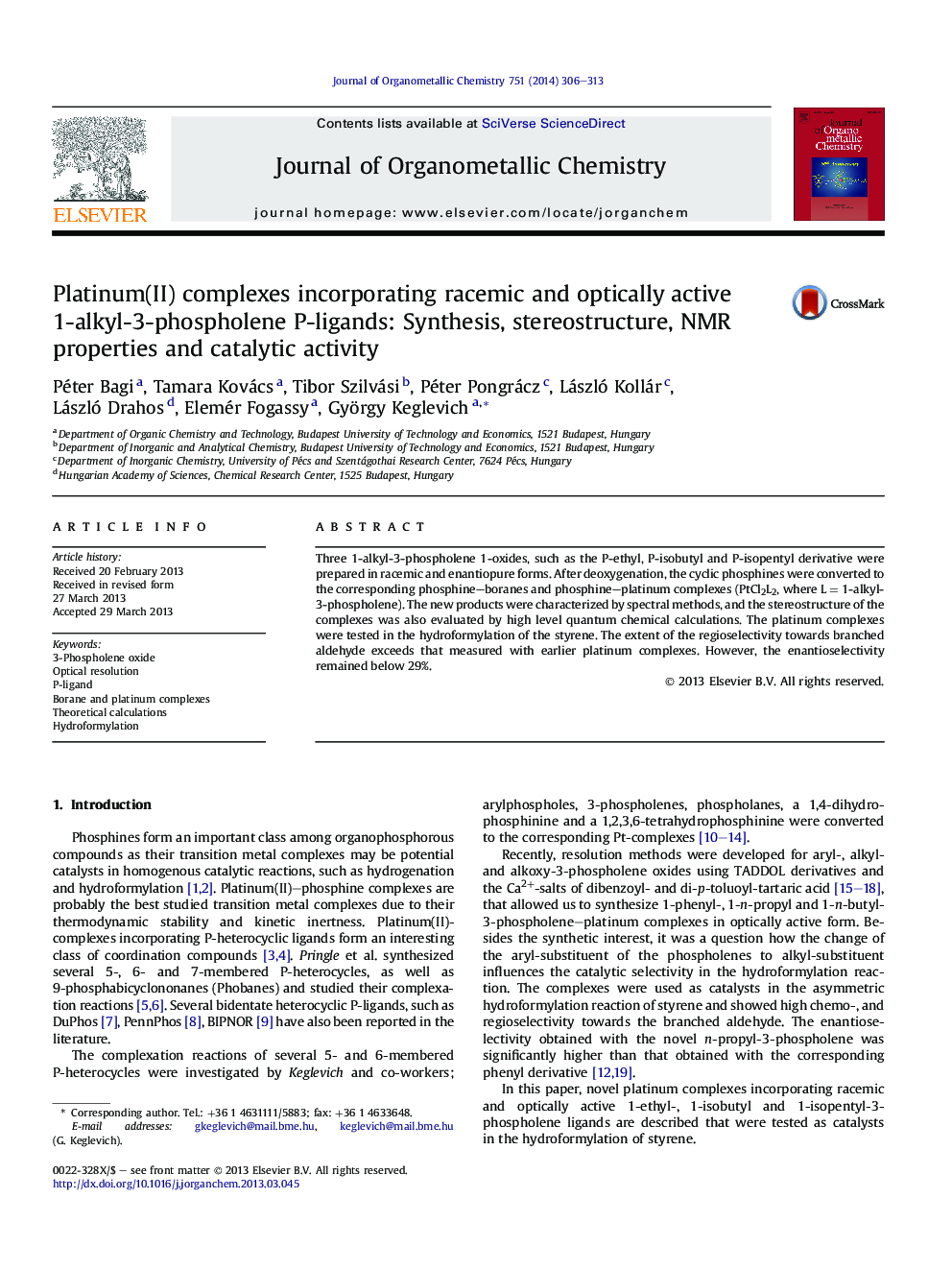| کد مقاله | کد نشریه | سال انتشار | مقاله انگلیسی | نسخه تمام متن |
|---|---|---|---|---|
| 1324280 | 1499889 | 2014 | 8 صفحه PDF | دانلود رایگان |

• The optical isomers of phospholene 1-oxides were prepared by a novel resolution method.
• After deoxygenation, the phospholene oxides served as P-ligands in borane complexes and in platinum complexes.
• Stereostructures of the new platinum complexes were evaluated by high level quantum chemical calculations.
• The Pt-complexes were used as catalysts in the hydroformylation of styrene and showed unusual regioselectivity.
Three 1-alkyl-3-phospholene 1-oxides, such as the P-ethyl, P-isobutyl and P-isopentyl derivative were prepared in racemic and enantiopure forms. After deoxygenation, the cyclic phosphines were converted to the corresponding phosphine–boranes and phosphine–platinum complexes (PtCl2L2, where L = 1-alkyl-3-phospholene). The new products were characterized by spectral methods, and the stereostructure of the complexes was also evaluated by high level quantum chemical calculations. The platinum complexes were tested in the hydroformylation of the styrene. The extent of the regioselectivity towards branched aldehyde exceeds that measured with earlier platinum complexes. However, the enantioselectivity remained below 29%.
Racemic and optically active 3-phospholene 1-oxides were prepared and used after deoxygenation in the synthesis of the corresponding platinum complexes that were tested as catalysts in the hydroformylation of styrene.Figure optionsDownload as PowerPoint slide
Journal: Journal of Organometallic Chemistry - Volume 751, 1 February 2014, Pages 306–313